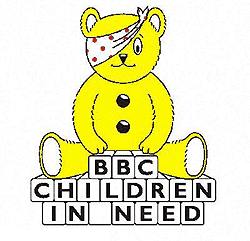How strategic is your story gathering?

This week the Story Network came together. It’s a regular meeting for those working in charity storytelling. It’s not a general interest group (although we love people who appreciate good stories!), it’s a professional network where we discuss everything from building relationships with services teams and frontline staff – they are your best researchers! – to the ins and outs of permission forms.
We kick off each session with an inspiration session where we share examples of amazing storytelling that’s caught our eye in the previous two months. There are usually quite a few examples, but this week it was all about Children in Need. Happily, they attend the Story Network and so Jo Porter gave us a bit of an insight into everything that goes into planning their storytelling.
Children in Need funds more than 2700 projects across the UK and while we ‘only’ see 12 films on the night, some 200 stories are captured to support the whole campaign, which includes everything from programming across the national and regional BBC network to assembly packs for schools, and, of course, lots of content for social networks.
Work on the following year begins not long after the last appeal has closed. The process starts with a huge UK-wide mapping exercise which plots out the main issues and themes that need to be covered. It then becomes a complex exercise of ensuring all regions have enough stories to access and that there is an even spread of topics covered. Things to consider include whether a project will still be a grant beneficiary by the time the following appeal rolls around.
When I set up the story-gathering team at VSO back in January 2006 I used to do a similar mapping exercise. I’d consult colleagues to find out what the themes of their forthcoming appeals and campaigns were and what they thought the hot topics would be for their audiences over the next year. I was only planning four or five overseas visits a year to capture 30 or 40 stories, though! I found the achievements of Jo’s small but nimble team mindboggling.
But what is true of both those examples is that strategy drives the story gathering; it’s about starting with a bird’s eye view of what a campaign or organisation needs to achieve and then zooming into the detail to choose the right story. Before any question is asked or any lens focused there is already a real understanding of what the story needs to deliver. A massive £31,124,896 was raised on the night for Children in Need and much of this was down to the power of the personal stories told in the lead up and on the night.
Many organisations happen upon a good story and then think about what it can do for them. That’s OK, sometimes this works, but often it doesn’t and you end up trying to crowbar key messages into a story that doesn’t quite match. I think one of the tricks of story gathering that delivers results is to know exactly what you need a story to do for you before you have even started looking for it.
Get in touch if you would like us to help you develop a plan for your story gathering and have a look at our storytelling training.

Sarah Turley
Great blog, Catherine! Mapping out the stories your organisation needs is so important. One of the major challenges I find is to get colleagues to plan far enough ahead so that I can deliver great stories for them. I find it takes a time and patience to educate people about how long it takes. From sourcing a story from services teams, all the way through interviewing, photographing, filming, writing up and approval stages, takes takes days, weeks, even months sometimes. The day I get collegaues to understand this will be a very happy one!
Emma Kendon
Yes, great blog, and I enjoyed your Borne campaign too, thank you. One of the challenges we definitely find in the international development sector is relationship building with country offices so they *always* have an eye on what we’re looking for. Haven’t cracked that one yet.
Catherine Raynor
Thanks Sarah and Emma for your comments, and apologies for taking a while to reply! I think both of your challenges are routed in the same fundamental problem that so many charities have, which is that services and field teams don’t always understand the process of story gathering and what it takes to get it right. This can be for all sorts of reasons, but often it is because we, as comms & fundraising professionals, haven’t done enough to help build their understand. We worked with Malaria Consortium a while back to develop a communications toolkit to help with story gathering (https://www.mile91.co.uk/our-work/story/a-story-handbook/) but even with a commitment like that it can take time and patience to achieve real change on this front. Good luck both of you!
Emma Kendon
For us, a major challenge is getting the country offices to want stories, or want to help the UK fundraisers and comms get stories. Part of that is the pressure they’re under, part is that we’re raising unrestricted income, and it’s hard for them to quantify the value. We’re trying harder to train our field volunteers, as they’re really the ones at the front-line. Yes, time, patience and a healthy splash of imagination!
Finding the hidden stories in your charity | CharityComms
[…] Mapping out your story needs for the coming months or year can really help give other teams you’re working with notice for their own planning. There will always be breaking news or media requests to quickly respond to, but by being organised and planning ahead for big campaigns, you’ll secure good will across the board. Not all charities have storytelling requirements as complex as Children in Need but there are lots of lessons to be learned from the charity’s process. […]